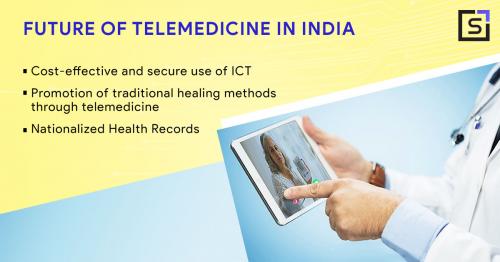Read news, articles, knowledge posts and opinions
on technology in healthcare
India's telemedicine companies are growing enormously and are impacting the international economy in terms of growth rate, revenue, sales, market share, and size.

India's telemedicine companies are growing enormously and are impacting the international economy in terms of growth rate, revenue, sales, market share, and size. Due to the sizeable rural-urban population which is bereaved from medical facilities, various technological initiatives to bridge this gap are in the pipeline. The COVID-19 pandemic has provided an unexpected but timely opportunity to ramp up the use of telecommunication facilities to ensure that patients receive appropriate care during the lockdown, hence making the year 2020 an important one in the telemedicine industry's history. The rapid advancements in the last few years present telemedicine as the next healthcare frontier. What is Telemedicine? Telemedicine is a word coined in the 1970s, which means "healing from a distance." It is defined as the provision of delivering clinical services to patients virtually through electronic communication. Future Prospects of Telemedicine in India There is plenty of room for the progress of telemedicine technology in India in the coming years. Let us take a look at what's in line for the future. The use of Information and Communications Technology: National Digital Health Authority of India (NDHAI)/National e-health authority (NeHA) is being set up to achieve high-quality health services for all Indians through cost-effective and secure use of ICT in health and health-related areas. Telemedicine in traditional medicine: Telemedicine practices in India are also being extended to conventional medicine. The objective of the National Rural AYUSH Telemedicine Network is to promote the benefit of traditional healing methods to the broader population through telemedicine. The use of Artificial Intelligence: AI can help to identify issues related to medical health. Through IoT, prospective medical emergencies such as asthma attacks, heart failure, diabetes can be monitored via connected devices. AI can detect lung cancer or strokes based on CT scans, assess the risk of various heart diseases based on electrocardiograms and cardiac MRI images. Setting up of health records: The National Health Stack (NHS) is a virtual digital platform for healthcare. NHS aims to secure digital health records for all citizens by 2022 to make telemedicine and e-health easier. Conclusion According to a study, 90% of participants found telemedicine cost-effective, while 61% of physicians found an increase in patient inflow compared to their regular practice. Telehealth and telemedicine are proving to be wonders in healthcare by changing how people consult with doctors, book appointments, and buy medication. The Indian government is now starting to take a keen interest in developing telemedicine services, resulting in a slow but steady increase in its use in public health. Telemedicine practices are bound to disrupt the field of medicine in a big way in the coming years.
4th Floor, 3rd Eye Vision Complex,
IIM Road Ahmedabad - 380015, Gujarat.

 Download Resources
Download Resources